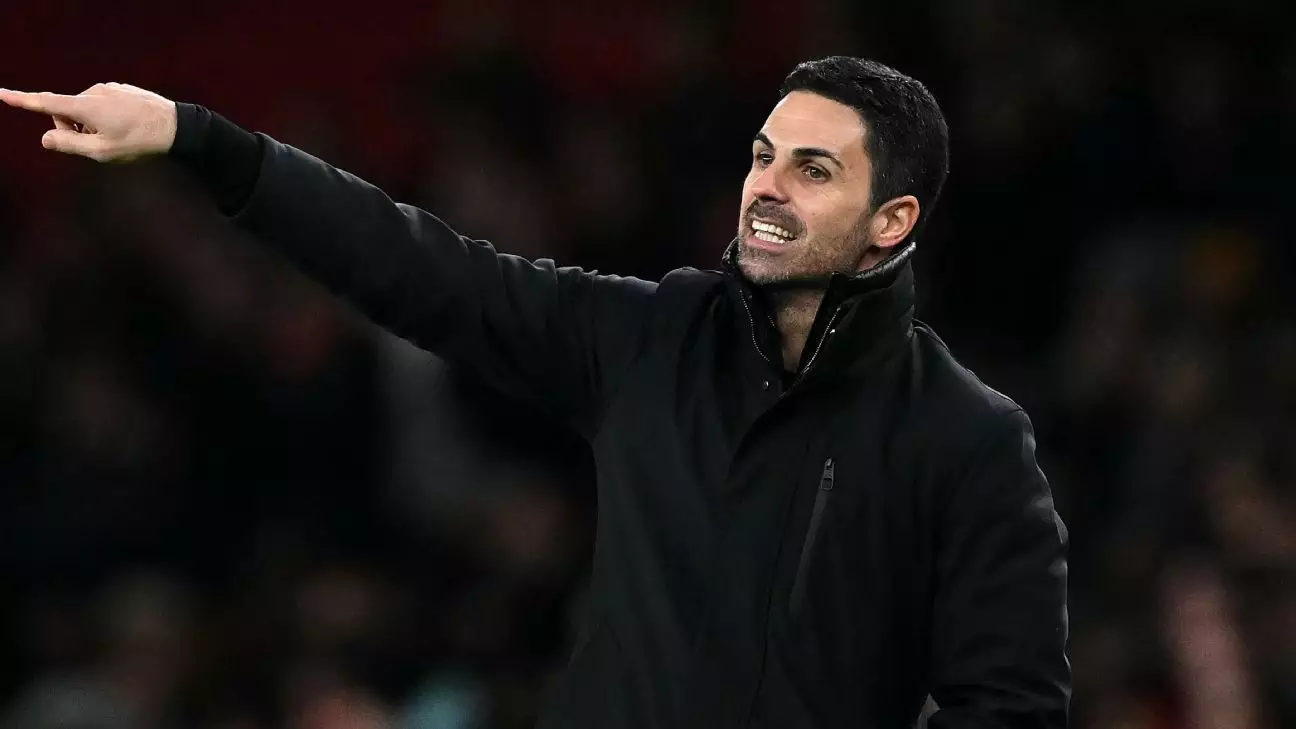Arsenal’s recent 2-0 defeat against Newcastle United in the first leg of the Carabao Cup semifinals has sparked debates regarding the impact of external variables on the team’s performance. With goals from Alexander Isak and Anthony Gordon giving Newcastle a significant advantage, the match revealed not only tactical shortcomings but also an ongoing struggle with adapting to new playing conditions—specifically, the change of ball used in the competition. This defeat marks a crucial moment for Arsenal as they prepare to approach the return fixture on February 5.
In the aftermath of the match, Mikel Arteta’s frustration was palpable, particularly as his team squandered a staggering number of goal-scoring opportunities. An expected goals figure of 3.12 illustrated Arsenal’s inability to convert promising chances into tangible success—recording the highest expected goals tally in a Premier League match this season where no goals were ultimately scored. Arteta’s remarks suggest that psychological factors may loom large after such an underwhelming performance, with the pressure to succeed intensifying among his players.
One of the more intriguing aspects of Arteta’s analysis was his reference to the Carabao Cup ball, a departure from the team’s standard match equipment. “This ball flies a lot. We discuss that as well so there are details we can do better,” Arteta noted, emphasizing the need for his team to familiarize themselves with the peculiarities of a ball that behaves differently than the regular Nike model they typically use. This insight serves to highlight a notable challenge—how external factors such as the type of ball can affect a team’s performance and adaptability during high-stakes fixtures.
Interestingly, Arteta’s concerns about the ball echo a previous complaint voiced by Pep Guardiola during his tenure at Manchester City’s coaching staff. After facing challenges with the Mitre ball in a 2017 match, Guardiola expressed skepticism about the ball’s effectiveness. This history serves as a reminder that even the most accomplished managers and players can struggle to adapt to seemingly minor changes in equipment.
The Road Ahead for Arsenal
Ultimately, the responsibility lies with the coaching staff and players to ensure that focus and adaptability become paramount in the face of such setbacks. Arteta’s approach moving forward will be critical; he must balance addressing missed opportunities while fostering a mindset that embraces change. The upcoming return leg against Newcastle poses a significant test for Arsenal, as they must not only confront their recent failings but also harness the lessons learned from this disappointing performance. If Arsenal can successfully adapt to the Carabao Cup ball and reclaim their composure, they still have a fighting chance to overturn the deficit and advance in the competition.


Leave a Reply